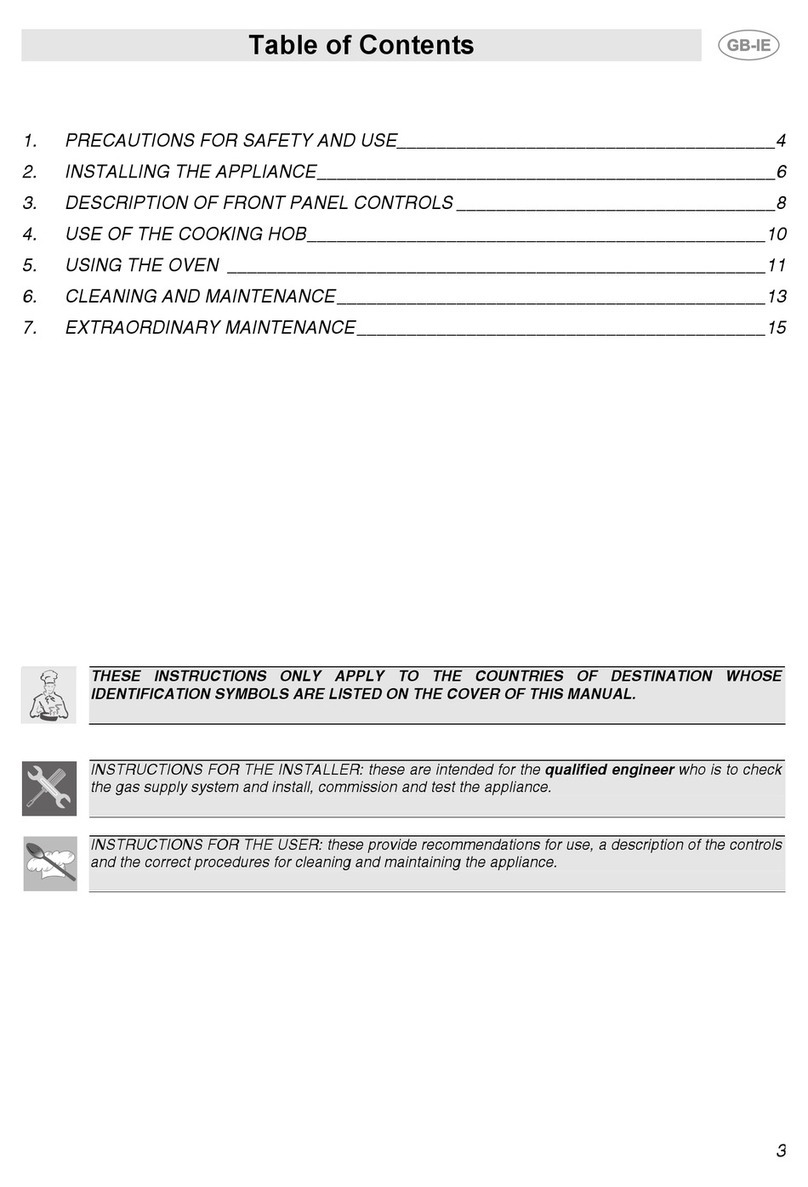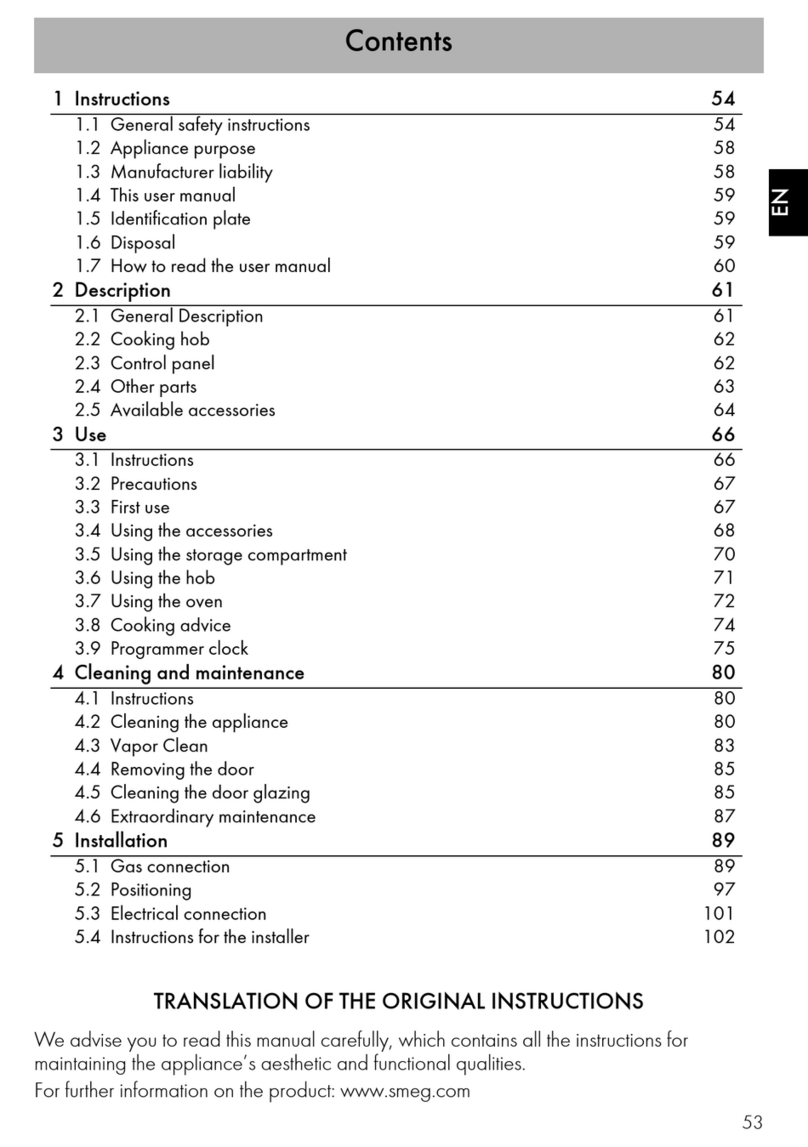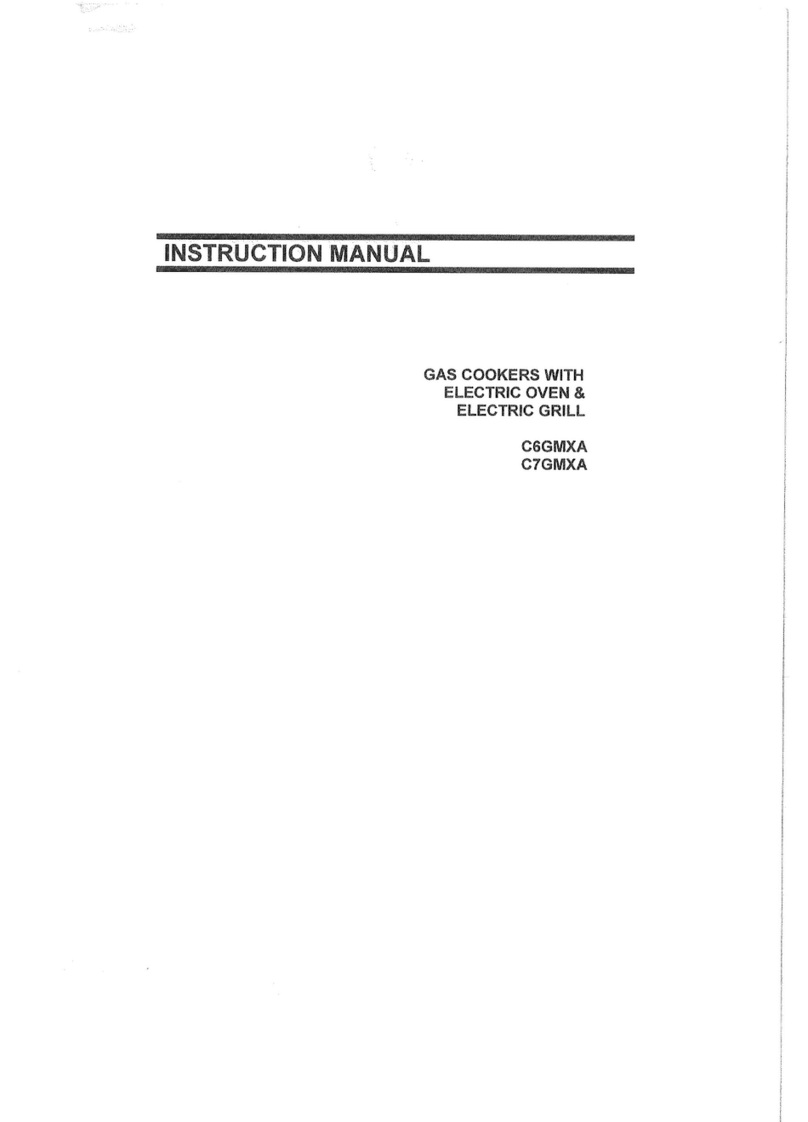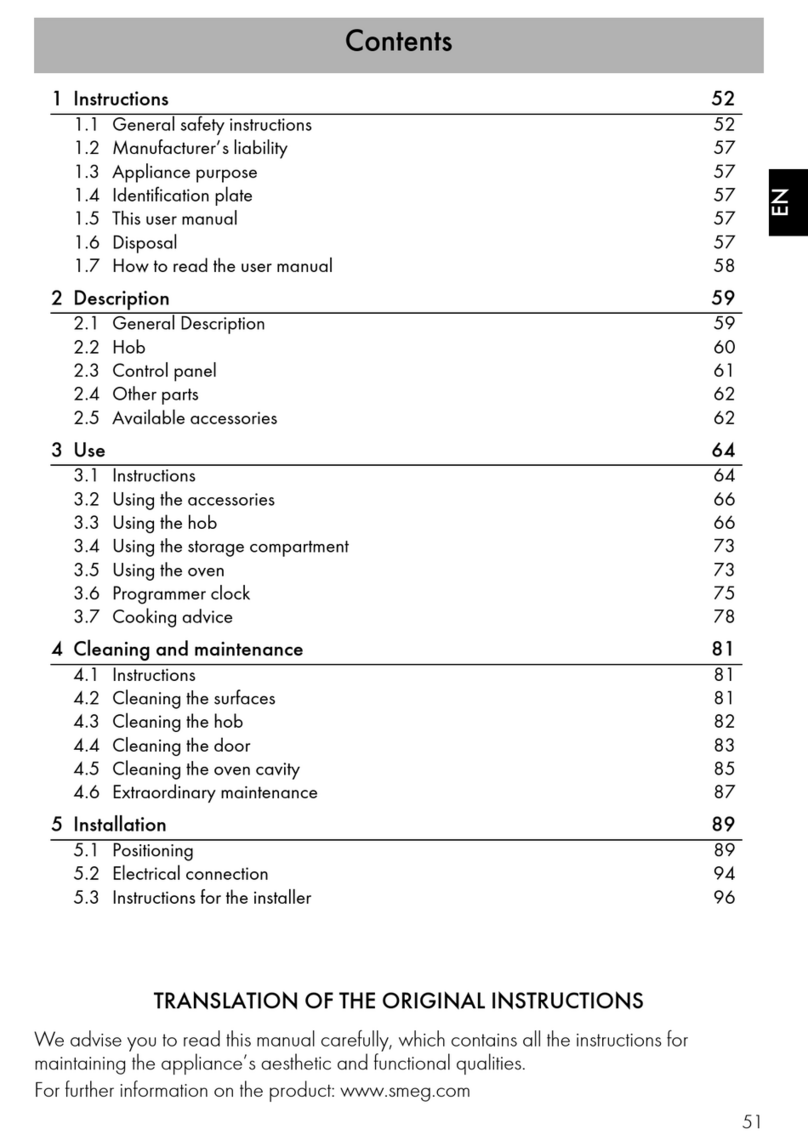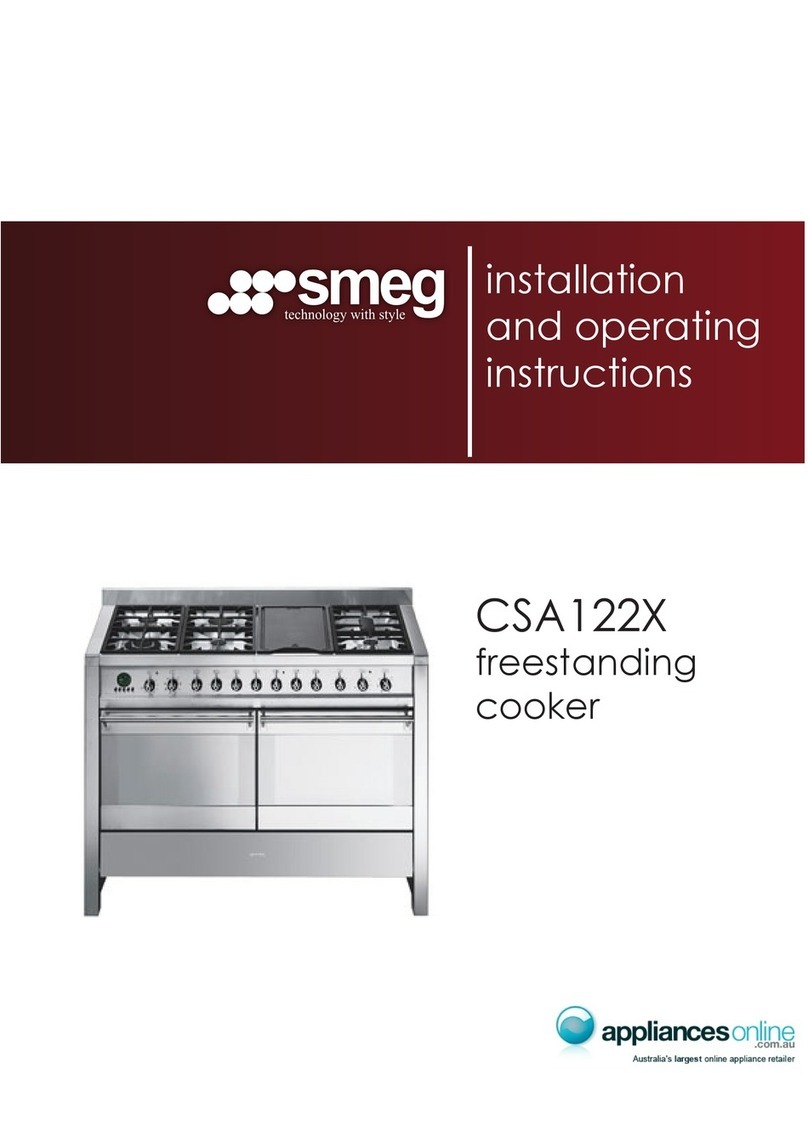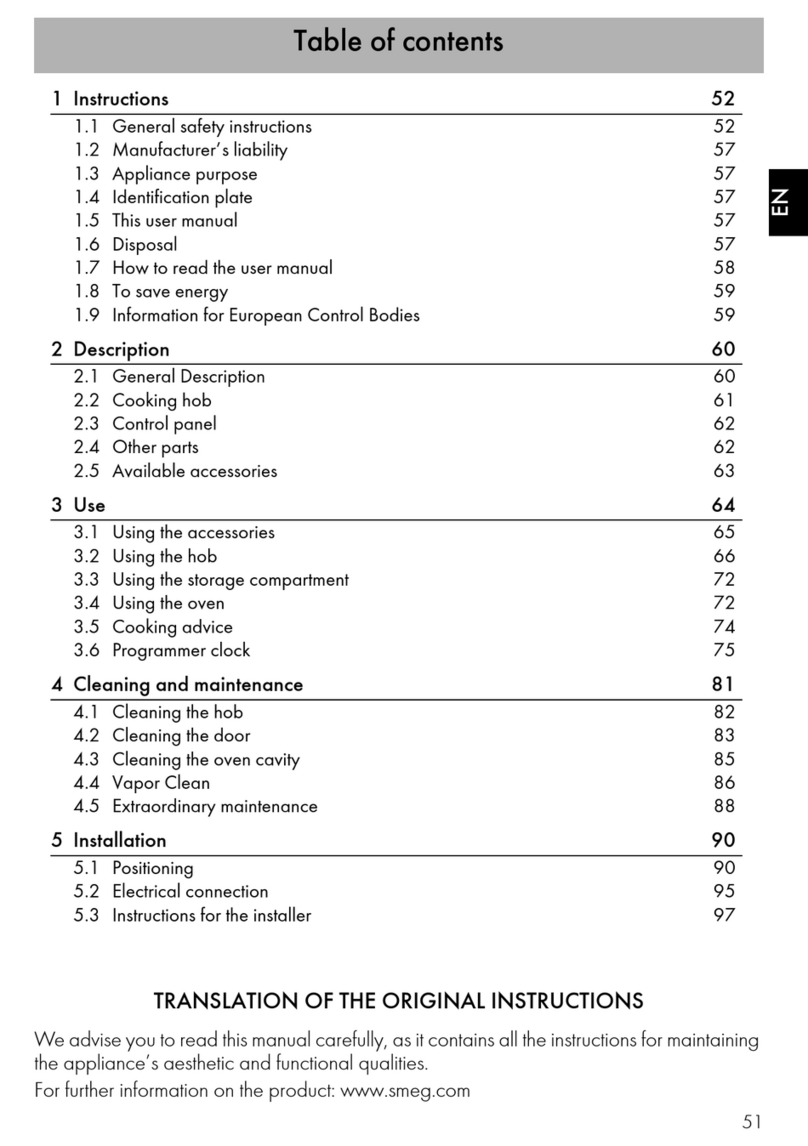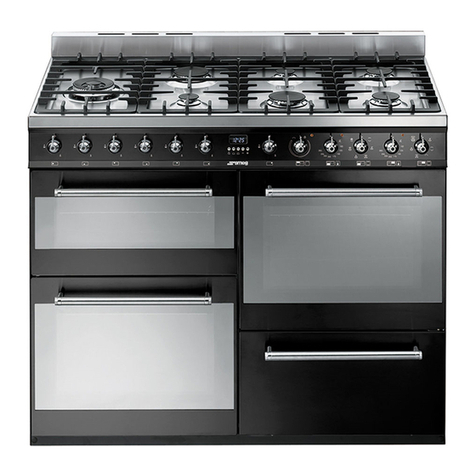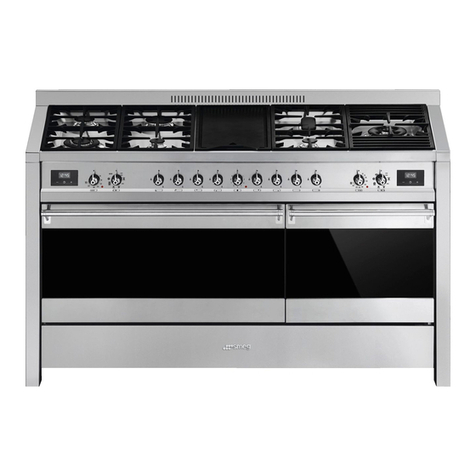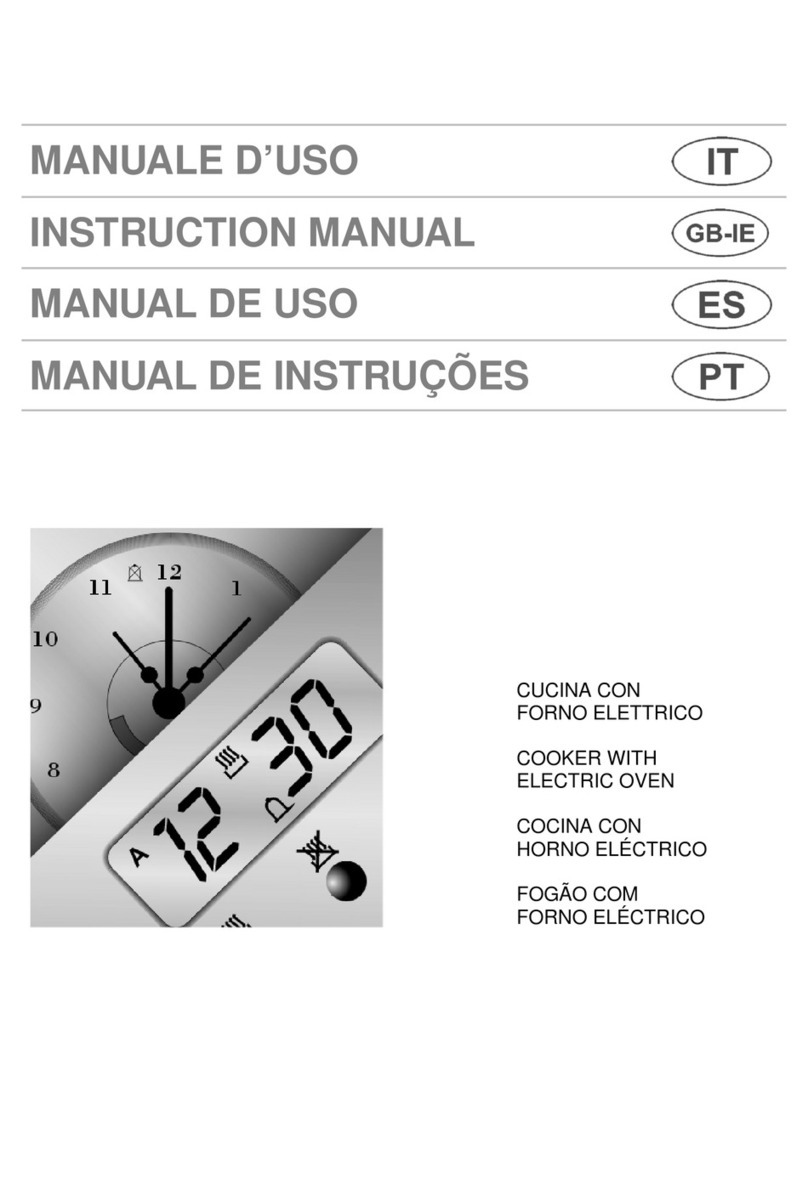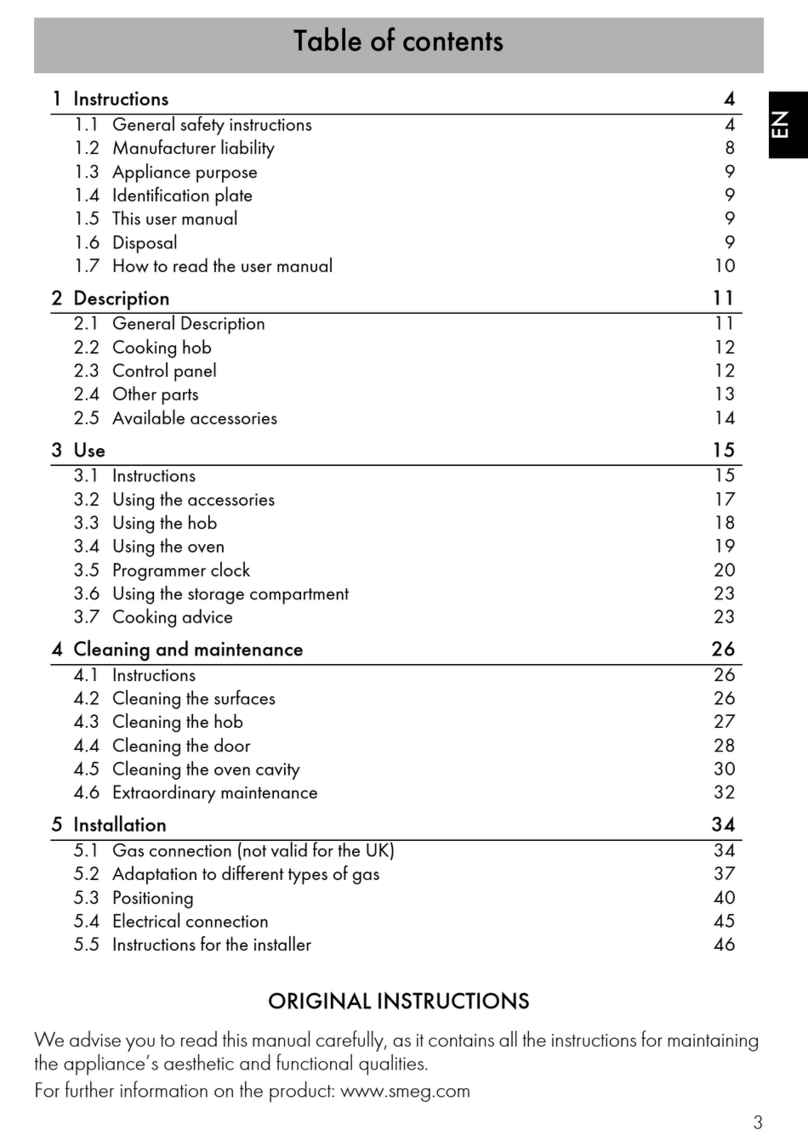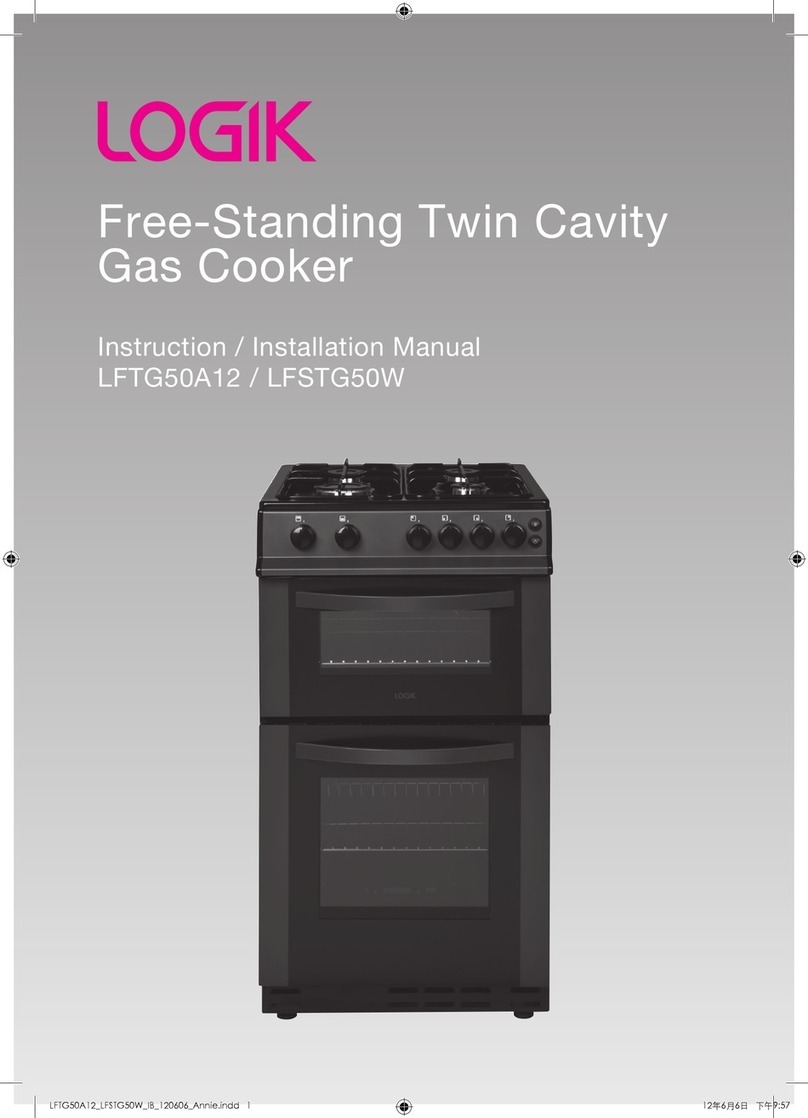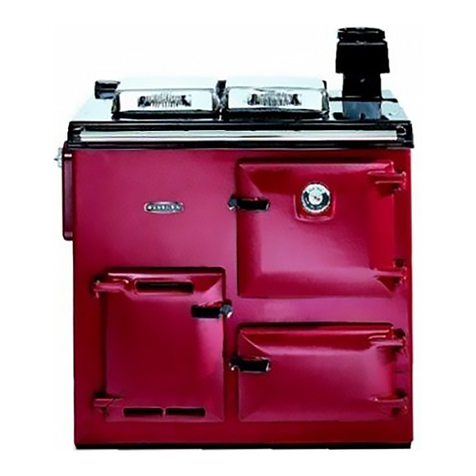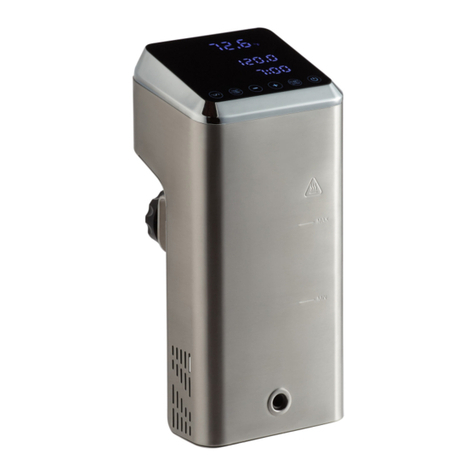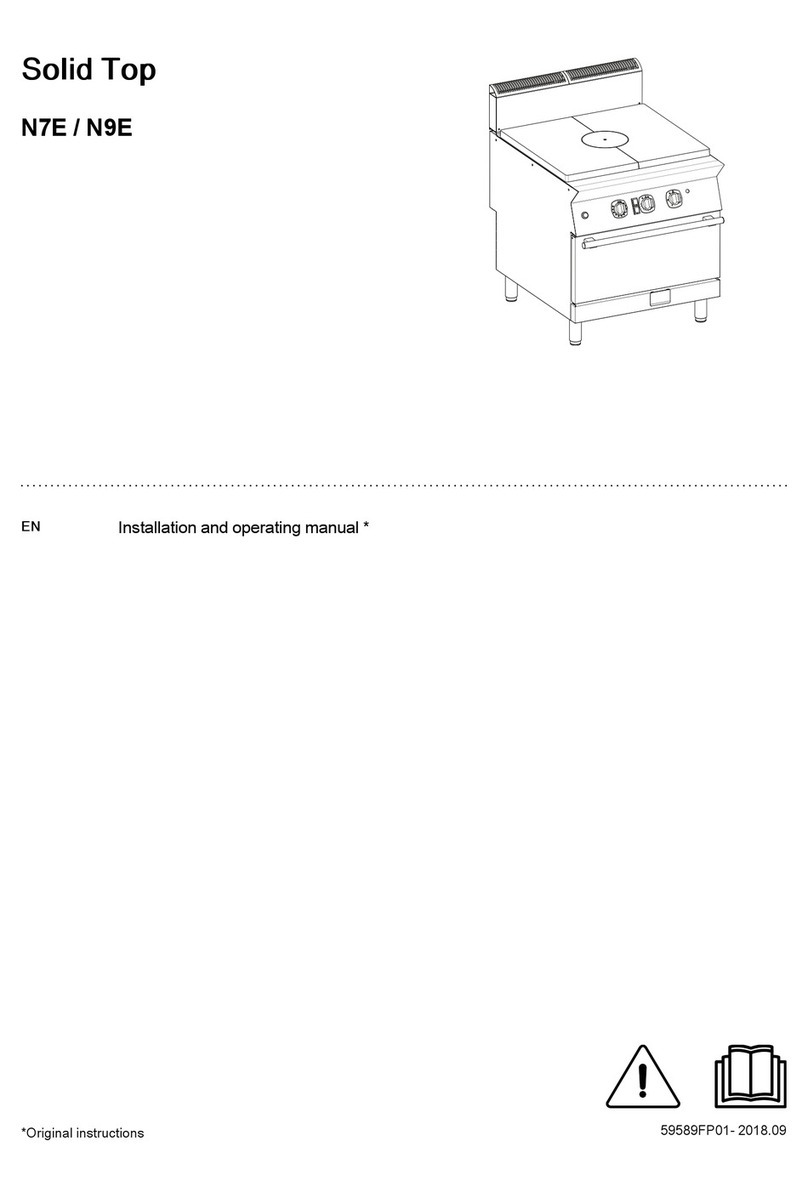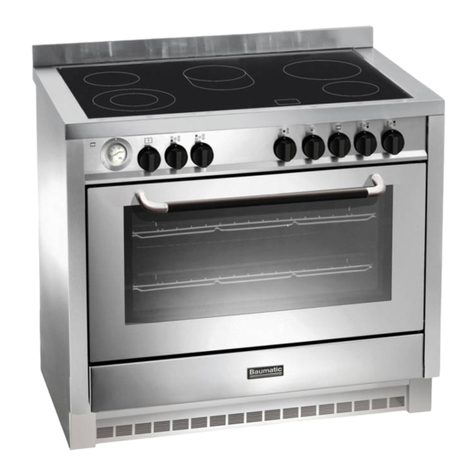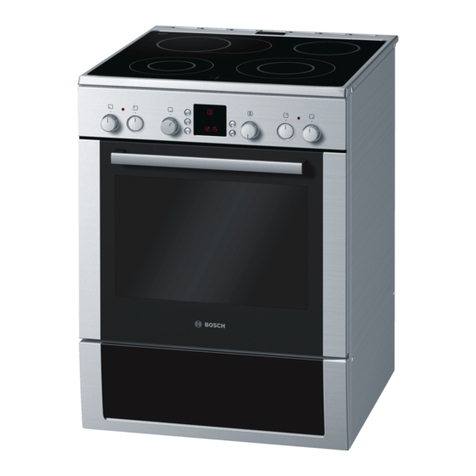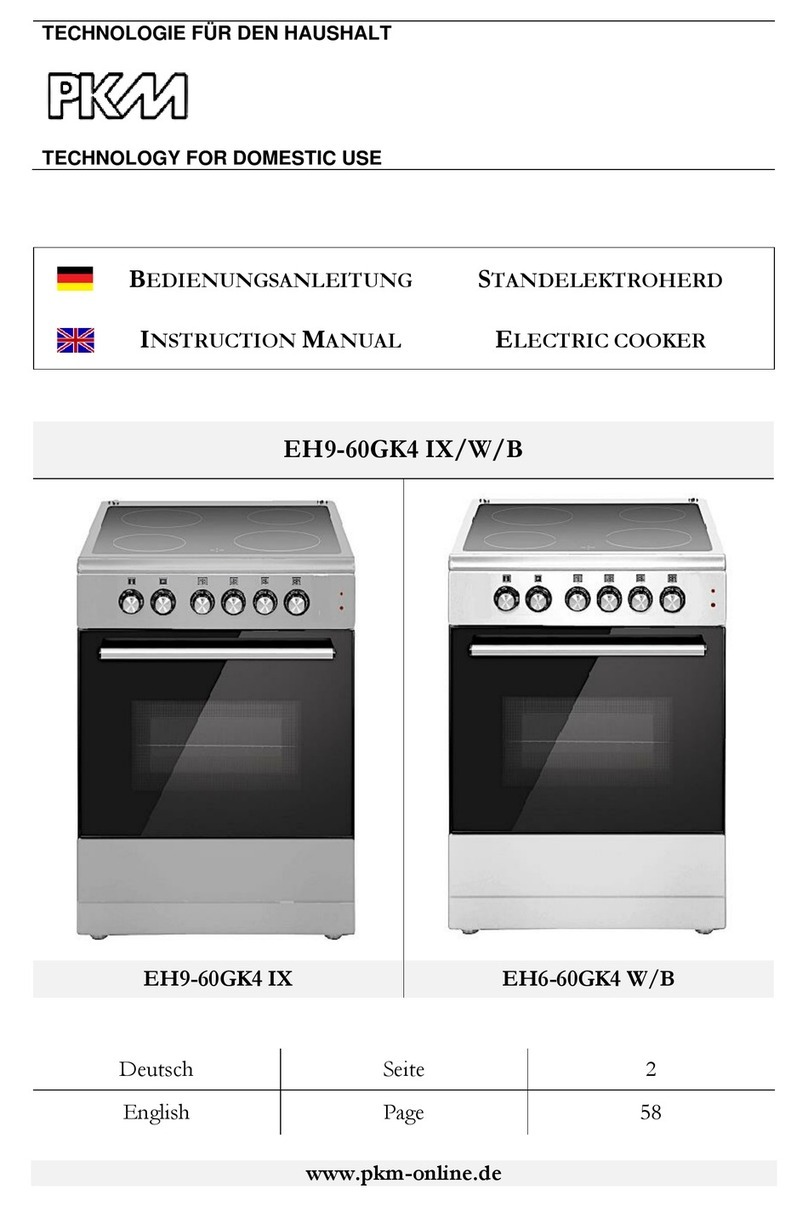Use
50
A gas leak can cause an explosion.
If you smell gas or there are faults in the gas
system:
• Immediately turn off the gas supply or
close the valve on the gas cylinder.
• Extinguish all naked flames and
cigarettes.
• Do not turn on power switches or
appliances and do not remove plugs
from power sockets. Do not use phones
or mobile phones inside the building.
• Open the window in order to ventilate
the room.
• Call customer assistance services or your
gas supplier.
Malfunctions
Any of the following indicate a malfunction
and you should contact a service centre.
• Yellowing of the burner plate.
• Damage to kitchen utensils.
• The burners do not ignite properly.
• It is difficult to keep the burners lit.
• The burners go out when the appliance
is in use.
• It is difficult to turn the gas valves.
If the appliance does not work properly,
contact your local Authorised Service
Centre.
3.2 First use
1. Remove any protective film from the
outside or inside of the appliance,
including accessories.
2. Remove any labels (apart from the
technical data plate) from the
accessories and from the oven cavity.
3. Remove and wash all the appliance
accessories (see 4 Cleaning and
maintenance).
Oven cavity
4. Heat the empty oven at the maximum
temperature to burn off any residues left
by the manufacturing process.
High temperature inside the oven
during use
Danger of fire or explosion
• Do not spray any spray products near
the oven.
• Do not use or leave flammable materials
near the oven or the storage
compartment.
• Do not use plastic cookware or
containers when cooking food.
• Do not put sealed tins or containers in
the oven.
• Do not leave the oven unattended
during cooking operations where fats or
oils could be released.
• Remove all trays and racks which are
not required during cooking.
